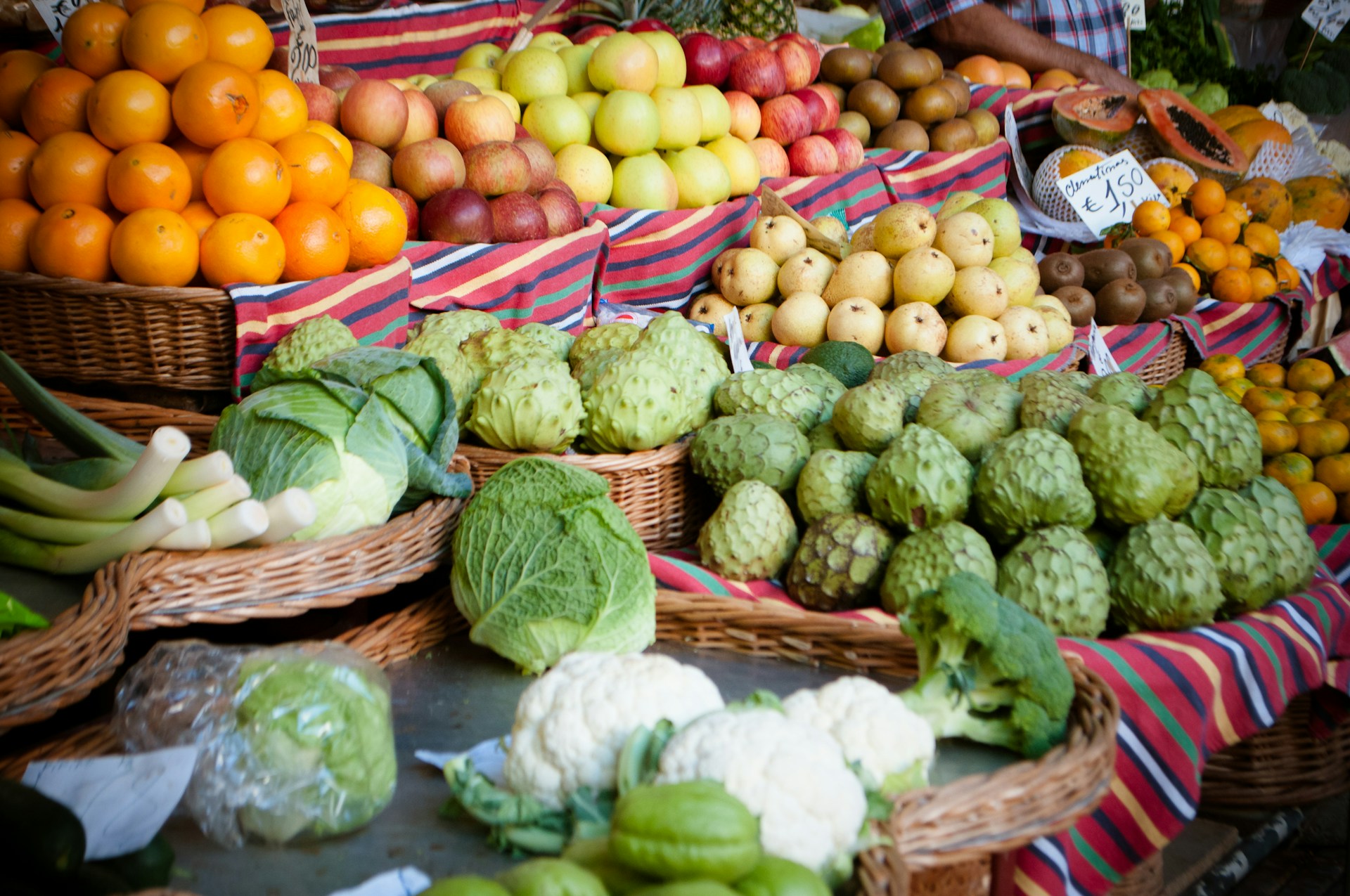Inefficiencies in produce distribution can lead to significant waste and reduced profit margins.
Modern forecasting techniques, backed by advanced technology, promise to revolutionize this crucial phase of the supply chain in the food industry.
Through strategic, data-driven predictions, these techniques aim to optimize scheduling, transportation, and demand planning.
Yet, despite their potential, these advanced methods remain undervalued and underutilized within the industry.
This may be due to a lack of awareness or understanding about their benefits.
The goal of this discourse is to shed light on these methods, their applications, and their transformative potential.
Forecasting Techniques To Revolutionize Produce Distribution
1. Predictive Analytics for Produce Demand
The use of predictive analytics in the field of produce distribution has recently taken off, creating a transformative effect across the sector.
Foremost, predictive analytics involves applying statistical algorithms and machine learning techniques to historical data to predict future trends.
In the context of produce demand, these algorithms utilize past sales data, market trends, weather forecasts, and other related variables to foresee customer demand.
When successfully employed, these insights can furnish market players with the critical information needed to drive produce availability, minimize waste, and ultimately amplify profits.
Integrating predictive analytics into planning processes can revolutionize produce distribution, transforming how stakeholders approach demand management and logistic optimization.
The benefits of predictive analytics are not limited to mere prediction of consumer habits; it can also be utilized to enhance operational efficiency.
For instance, it can aid in the optimization of inventory levels, ensuring businesses keep adequate stock levels to meet fluctuating customer demand while preventing overstock and reducing waste.
It can also come in handy in price optimization, as understanding demand patterns can lead to more efficient strategies around pricing and discounting.
In essence, predictive analytics enable business owners to make faster and more informed decisions, resulting in enhanced customer satisfaction and improved business performance.
Predictive analytics also allows for a deeper understanding of the market’s complexities and competitive landscape, fostering strategic advantages.
This analytical approach facilitates anticipating changes in market dynamics, making it possible to act proactively rather than merely reacting to changes as they occur.
This advantage gives companies a significant competitive edge, as timely response to market demands can make all the difference in an industry as volatile as produce distribution.
Equally important, integrating predictive analytics into produce distribution processes leads to an improvement in demand forecasting accuracy.
Improved accuracy reduces the chances of stockouts or overstock situations, ensuring a continuous flow of produce required to meet market demand efficiently.
While the benefits of predictive analytics in produce demand are extensive, implementing these tools require careful planning and strategic investment in technology infrastructure.
Nonetheless, the potential returns from a successful implementation significantly outweigh the initial cost, making predictive analytics a necessary tool for the future of produce distribution.
2. Machine Learning Algorithms for Distribution Efficiency
Emerging technologies such as Machine Learning are no longer future predictions; they are a reality of today’s produce distribution sector.
The application of Machine Learning algorithms has introduced a new efficiency level in the distribution of fresh produce.
As these advanced algorithms process massive data quantities in real-time, they produce an accurate output that can help enhance decision-making in business operations.
These algorithms are inherent volunteers in learning from the existing data, thus constantly refining the distribution processes without needing explicit programming.
The utility of Machine Learning in forecasting inventory needs has been game-changing.
By interpreting patterns and trends from past data, it can predict future demands with precision, thus ensuring produce freshness and reducing waste.
In essence, these algorithms utilize past data to train a model that can predict future outcomes.
Not only does this increase the supply chain’s efficiency, but it also ensures produce freshness and availability, thus enhancing customer satisfaction.
Furthermore, Machine Learning has the capability to identify anomalies in normal patterns of operation.
These anomalies may range from unexpected demand spikes to shortage in supply, and their quick identification can be catalytic in timely remediation.
Besides forecasting, Machine Learning also assists in defining the optimal routes for produce delivery to retailers or final consumers.
Considering traffic conditions and the shortest paths, these algorithms suggest the most efficient and cost-effective routes.
Moreover, Machine Learning can provide real-time updates on shipment, enabling distributors to maintain transparency with their customers about the produce’s current location and estimated delivery time.
Therefore, it’s clear that Machine Learning holds great potential in revolutionizing the produce distribution industry.
Its ability to analyze, learn from vast amounts of data, and make accurate predictions can contribute significantly to improving the efficiency of the distribution sector.
Given its various applications, it’s about time that businesses operating in the produce distribution space leverage Machine Learning to maximize their efficiency and profitability.
While we have already seen the beginning of this, the future promises even more sophisticated uses of Machine Learning in produce distribution.
3. Internet of Things (IoT) for Tracking Systems
The Internet of Things (IoT) has significantly revolutionized tracking systems in produce distribution.
The dynamics of produce distribution have been utterly transformed by IoT’s advancement and industrial application.
At the core of this transformation is the improved efficiency in tracking the movements of produce from the farms to the final consumer.
The three-dimensional real-time tracking offered by IoT solutions provides an in-depth visibility into the supply chain, enhancing coordination and productivity.
A decisive factor in this evolution has been IoT’s potential to monitor temperature, which is critical to the preservation of fresh produce during transit.
This capability can avert produce spoilage, thus considerably reducing losses and enhancing profitability.
Moreover, IoT can enable the assessment of produce quality even while in transit, giving distributors a strategic edge.
This modern technology can also supply valuable route optimization data for produce distribution, leading to greater efficiency and reduced carbon footprint.
Through real-time visibility, stakeholders can proactively manage potential disruptions before they escalate into full-blown crises.
Newer IoT sensor technologies allow for proximity identification, which can be crucial in the crowded storage and distribution spaces of the produce industry.
Crucially, the data insights generated by IoT can be leveraged to enhance forecasting techniques in produce distribution, promoting a more demand-driven model.
This would better align supply and demand, preventing unnecessary waste and the associated financial losses.
Furthermore, IoT innovations such as smart pallets can transform inventory management in produce distribution.
They enable dynamic inventory allocation, provide quick access to vital stock data, and can facilitate better management decisions.
In summary, the Internet of Things holds enormous promise for the reshape the future of produce distribution.
4. Advanced Analytics for Supply Chain Optimization
The topic of advanced analytics for supply chain optimization is a significant aspect of revolutionizing produce distribution.
It constitutes methodologies that leverage data and statistical algorithms to forecast future trends and behaviors, thus enabling effective decision-making.
One of the main applications of advanced analytics in the supply chain is in inventory management.
By using advanced analytics, produce distributors can accurately predict demand and supply trends, allowing for optimal inventory levels and reduced waste.
It also serves crucial in the area of transportation optimization, where distributors can forecast the most time and cost-effective routes to facilitate the produce delivery.
Additionally, advanced analytics facilitates warehouse optimization by predicting the most efficient ways of storing and retrieving produce, thereby reducing storage costs and ensuring produce freshness.
By predicting equipment performance, advanced analytics can also contribute to preventive maintenance, preventing sudden machinery failures that could disrupt the supply chain process.
Moreover, through pattern recognition and trend analysis, advanced analytics provides insights into consumer purchasing behavior, which can further assist in effective demand planning.
These analytic models can adapt to changes in market dynamics, thereby leading to proactive supply chain strategies.
The real-time insights provided by the analytics can enhance transparency within the supply chain, ensuring coordination between different stakeholders, including growers, distributors, and retailers.
Furthermore, advanced analytics can help in risk management, identifying potential shortfalls and vulnerabilities in the supply chain and suggesting measures to mitigate these risks.
The integration of advanced analytics with other technological advancements such as Internet of Things (IoT) and Artificial Intelligence (AI) has the potential to further elevate the performance of the supply chain.
By harnessing big data, advanced analytics allows for a more systematic and scientific approach in managing various aspects of the supply chain, thus replacing traditional methods that often relied on intuition and past experiences.
Advanced analytics thus plays a critical role in enhancing the efficiency, reliability, and sustainability of the produce distribution process.
As the technology continues to advance and become more accessible, it is expected that increasingly more distributors will adopt advanced analytics for supply chain optimization, leading to a revolution in produce distribution.
5. Artificial Intelligence for Demand-Supply Balancing
Artificial Intelligence (AI) has transformative potential in the agricultural sector, particularly in the critical field of demand-supply balancing.
It is instrumental in creating data-driven systems that can predict future trends and outcomes, leading to enhanced efficiency.
This technological innovation can revolutionize produce distribution thereby meeting customer expectations and managing wastage.
In essence, AI utilizes algorithms and historical data to forecast demand accurately, consequently guiding supply chain practices towards optimal performance.
Primarily, AI is capable of integrating various data sources like weather patterns, past predictions, and real-time data, resulting in more accurate demand forecasting.
Consequently, it enables producers to plan and modify their production process accordingly to meet the predicted demand and eliminate waste.
In addition, AI powered systems can share these predictions with suppliers and retailers, ensuring that the entire supply chain is synchronized with the anticipated demand.
The AI system’s ability to learn from previous instances and apply this knowledge to future predictions is a game-changer.
This predictive accuracy is essential in perishable goods such as produce, where overstocking and understocking can lead to quality compromise or financial loss.
More so, AI technology can assist in price optimization, by aligning price with expected demand, termed as dynamic pricing.
Such informed pricing can lead to stabilized demand, preventing stock-outs or accumulation of unsold produce.
Also, predictive AI can serve as an effective tool for customer segmentation, helping suppliers identify and target customer needs with precision.
Moreover, AI can support risk management by providing advanced insights into supply chain vulnerabilities, allowing for preemptive measures.
Furthermore, adoption of AI in demand-supply balancing accelerates Green initiatives by cutting down waste generation and carbon footprint associated with inefficient distribution processes.
Overall, integrating AI into the produce distribution process, aligning demand with supply becomes a more predictable and controllable process, enhancing operational efficiency while contributing towards sustainable agriculture.
The Bottom Line
Through the exploration of predictive analytics, machine learning, the Internet of Things (IoT), advanced analytics, and artificial intelligence, it becomes evident that technology has the power to revolutionize the world of produce demand and supply.
By harnessing these innovative technologic advances, companies are able to increase distribution efficiency, optimize tracking systems, and improve supply chain logistics.
Choosing to take advantage of these capabilities not only alters production and supply models, but can yield a more efficient, cost-effective, and sustainable business operations.
The future of produce demand and supply certainly seems to lean towards a more technologically driven model, where the outcome may be more predictive, accurate, and beneficial for both suppliers and consumers alike.




